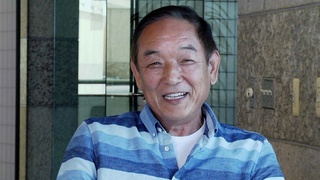Interviews
Treatment of Japanese Paraguayans during World War II (Spanish)
(Spanish) Initially, in 1903, the Paraguayan government passed a law barring black and yellow immigrants from entering. But over the years the law was abolished. In 1919, relations were first established between Paraguay and Japan. But immigrants didn’t start arriving until 1936. Of course, when the war broke out, Paraguay naturally had to take the side of the United States, and so it came out and declared war as well.
But, the important thing is that the Paraguayan government always respected the agreement they signed in 1919, which said that there would always be peaceful and friendly relations between the two countries. They always respected that, all the way up until today. There weren’t humiliations, there wasn’t concentration, concentration camps; there weren’t deportations, you know, none of those things. The only thing of course was that to adhere to the American cause, they closed schools, for example, and some diplomatic authorities returned to Japan. And that’s it, the rest was left alone. With no problems. So that’s why, with that kind of respect, I feel we were lucky, or, you know, the government did respect us.
Date: October 7, 2005
Location: California, US
Interviewer: Ann Kaneko
Contributed by: Watase Media Arts Center, Japanese American National Museum
Explore More Videos



The riot in Manzanar
(b. 1921) Nisei veteran who served in the occupation of Japan

The Dopey bank that survived the war
(b. 1934) Award-winning Disney animation artist who was incarcerated at Topaz during WWII

My daughter couldn’t fit in Japan, so I decided to go back to America (Japanese)
(b. 1936) Shin-issei welding business owner

Evacuated to the Jungle
(b. 1938) Philipines-born hikiagesha who later migrated to the United States.

Captured by Guerillas after bombing of Pearl Harbor
(b. 1938) Philipines-born hikiagesha who later migrated to the United States.

Grandfather picked up by US Army
(b. 1952) Former banking executive, born in Hawaii

Tough life at boarding house (Japanese)
Shin Issei – owner of izakaya (Japanese-style tavern) and kappo (small Japanese diner) restaurant, Honda-Ya


Father's business partner operated their farming business during WWII
(b. 1935) Sansei businessman.

Father was convinced the constitution would protect him
(b. 1935) Sansei businessman.


General reasons why people left Japan for Peru
Okinawan American whose parents are from Peru.

The lack of discussion about family’s incarceration in Amache
Sansei judge for the Superior Court of Los Angeles County in California
